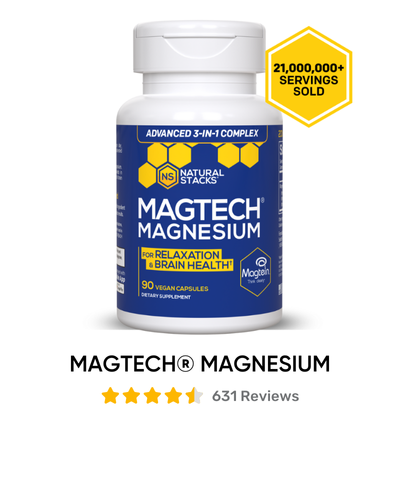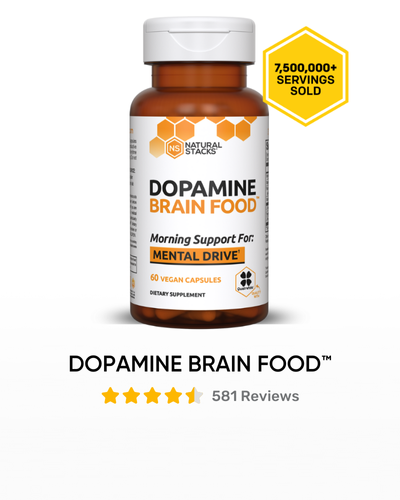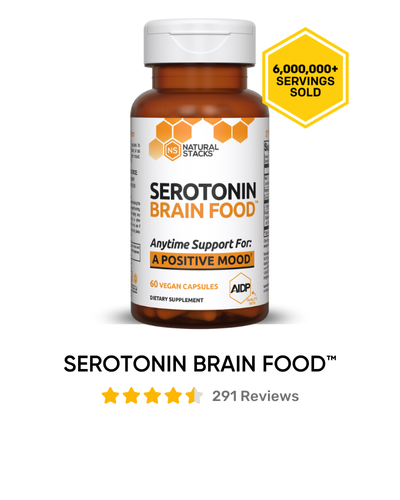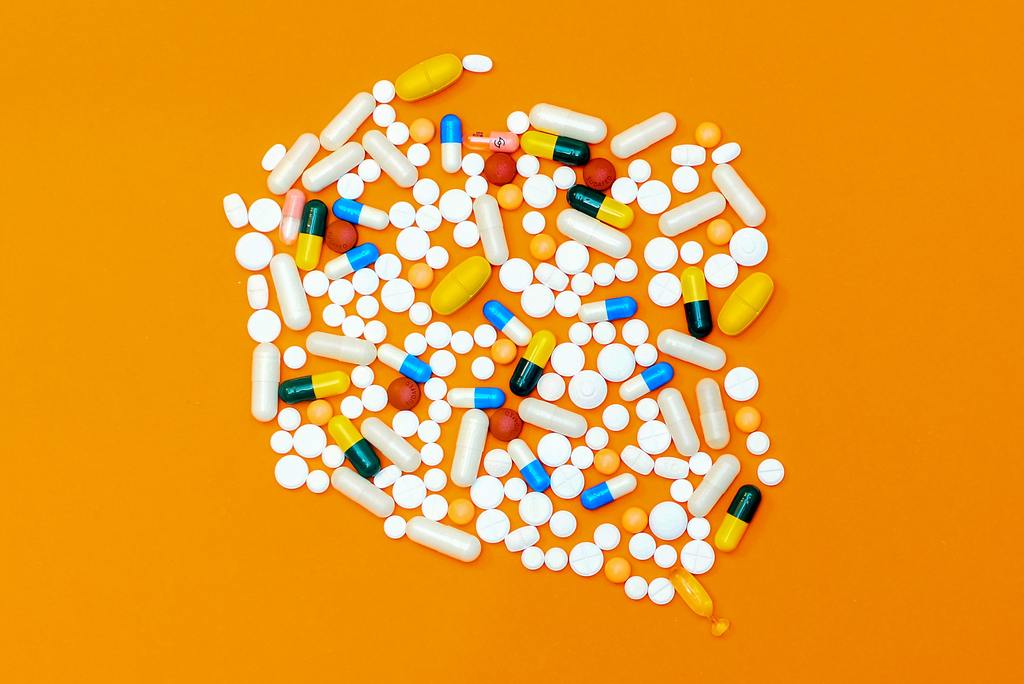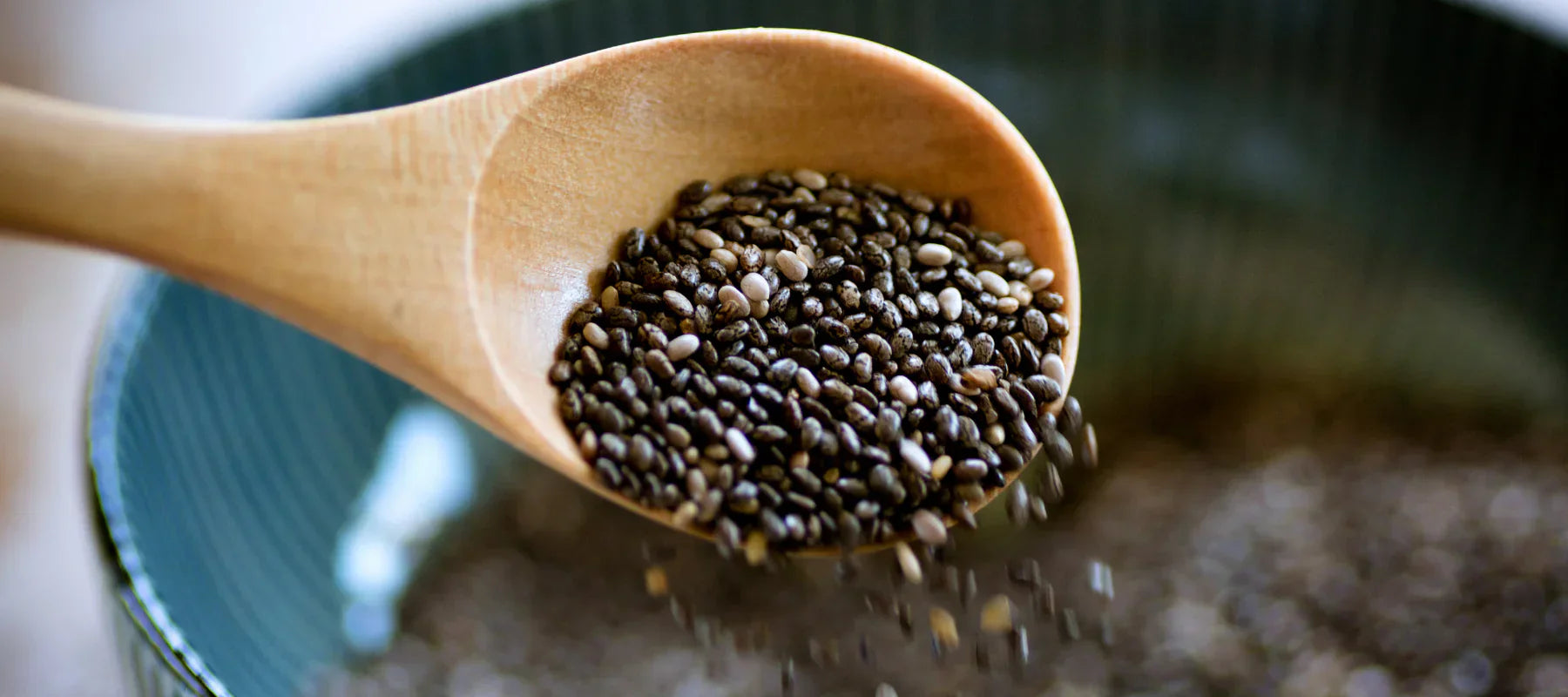Smart drugs, or nootropics, whether synthetic or natural, are gaining increasing popularity due to their positive effects on cognitive function and mental capabilities, as well as the fact they enhance brain health.
Noopept is one such supplement well worth looking into, so, if you want to know more, read on for the details.
What Is Noopept?
Noopept is the brand name for the molecule N-Phenylacetyl-L-prolylglycine ethyl ester, and it’s a synthetic nootropic supplement developed in the 1990s as an improved version of the original nootropic, piracetam.
The goal was to make it more powerful and more bioavailable than piracetam, meaning to be better able to cross the blood-brain barrier and absorb better in order to deliver its benefits in a more effective way.
Briefly, Noopept was made to boost memory, improve learning ability, enhance creativity, alleviate cognitive decline, and even help your mood.
How Was Noopept Developed?
Noopept was developed in 1996 by a Russian pharmaceutical company with the intention to treat cognitive decline related to aging. In the mid-1980s, they began their quest to find a powerful and stable nootropic that will be able to successfully reach the brain. Out of the many molecules they created, modified, and tested, only one made it to the last round.
That said, the reason why Noopept is commonly thought to be a part of the racetam-class of nootropics is that it was synthesized from the core molecule of piracetam. However, unlike piracetam, this molecule had the ability to be double-bonded with neuropeptides, which gave Noopept its unique abilities.
Namely, neuropeptides are small molecules that can work as neurotransmitters and neuromodulators in the whole of the nervous system, and help with neurodegenerative and neuropsychiatric disorders. [1]
To be more precise, when peptides aren’t bonded, they aren’t going to last long enough in your gut to get properly absorbed, but they’ll get quickly dissolved before they’re able to get to your brain. When they’re double or triple bonded, they are stronger and more durable, and have a better chance of crossing the blood-brain barrier intact. This is why the synthesis of Noopept was so successful.
Noopept vs. Piracetam: What’s the Difference?
Piracetam was developed in the 1960s by a Romanian psychologist and chemist, and it was considered a potential treatment for cognitive disorders like Alzheimer’s disease, post-stroke aphasia, OCD disorders, and some forms of epilepsy.
However, further research revealed that piracetam also had many brain-boosting effects despite its neuroprotective properties, and could be potentially used to enhance brain function and cognition.
This was a novel discovery at the time, and it’s how piracetam became the first original nootropic supplement. It’s now sold as a medication in Europe, and as a dietary supplement in the USA, though not FDA approved.
Since Noopept is considered as the improved version of piracetam, they have some similarities and some differences.
For starters, they’re both neuroprotective and anxiolytic (reduce anxiety), and they both enhance cognitive function and alleviate cognitive decline. Their effects are described as mildly stimulating, but powerful and long-lasting.
The Most Notable Difference Is in the Dosage
The most notable difference is regarding the dosage of the two. According to research, Noopept is about 1000 times more powerful than piracetam. [2] For example, the maximum dosage of piracetam is 1,200mg per day [3], while Noopept’s minimum daily dose is 10mg. [4]
Another important difference is that Noopept is more easily and rapidly absorbed, and can cross the blood-brain barrier without losing any of its power. [5] Piracetam, in this respect, is at a disadvantage.
Noopept also aids all steps of the memory process, helping to encode, store and retrieve information accurately at a later time [2], while piracetam only aids the earlier stages of the memory process, like taking in information and storing it, but not recalling information in detail.
That’s not to say that piracetam is ineffective. It’s still used today and it’s a well-known nootropic. Noopept, on the other hand, offers its own set of benefits in a slightly different way. It depends on what you’re looking for.
How Does Noopept Work in the Brain?
As a relatively new drug that’s been gaining some popularity recently, Noopept’s mechanisms of action, and the way it works in the body and the brain, haven’t been thoroughly understood just yet, because there hasn’t been enough extensive research.
However, out of the studies available so far, mostly animal and in cells (in vitro), a few can be singled out that could explain Noopept’s effects on cognitive health:
Noopept Simulates NGF & BDNF
According to some mouse model studies, chronic intake of Noopept can stimulate nerve growth factor (NGF) and brain-derived neurotrophic factor (BDNF) in the hippocampus [6][7], the part of the brain that regulates emotions, learning, and memory, and the hypothalamus, which is responsible for regulating the homeostasis of the body, releasing hormones, and in that way, affecting overall behavior.
Both NGF and BDNF are involved in neuroplasticity, which is the brain’s ability to constantly renew itself by reorganizing neural connections by strengthening old ones, as well as forming new ones.
This is especially important when it comes to neurodegenerative processes such as dementia or Alzheimer’s disease. According to these two studies, Noopept could prevent the onset of symptoms of Alzheimer’s disease in patients with mild cognitive decline.
Noopept Boosts Alpha & Beta Wave Activity
Noopept can influence brainwaves, which are neural oscillations in rhythmic patterns oscillating at a certain frequency in the central nervous system. One clinical trial noted that Noopept increased alpha and beta brainwave activity in mice, in all areas of the brain. [8]
Alpha brain waves are relatively slow, and they oscillate in the frequency range of 8-12Hz. Your brain usually produces them in the morning when you’re in an awake but relaxed state of mind. Because they’re slow, they’re associated with a calm state of mind, making it easier to enter the state of flow and experience increased creativity. They aid learning and creative problem solving because then the brain is more open to accepting new possibilities.
Beta brain waves are more dynamic, oscillating between 12.5-30 Hz, and your brain produces them during most of your waking state of consciousness when you’re engaged in something, and the attention is primarily focused on tasks and decision making. In short, beta wave activity is primarily associated with increased alertness and focused mental activity.
This evidence could explain some of its positive effects on mood, active learning, increased focus, and enhanced creativity. However, no matter how optimistic scientists are about this property of Noopept, more clinical studies, especially with human subjects, could help get more insight into this mechanism.
Noopept Influences GABA Activity
Some mouse model studies suggest that Noopept could influence Gamma-aminobutyric acid (GABA) activity in the hippocampus. [9][10] GABA is an amino acid that works as a neurotransmitter, and it’s considered to be inhibitory because it’s main activity is to regulate the nervous system by decreasing excess excitability. In this way, it promotes a calmer state of mind and reduces anxiety, as well as mental stress.
Noopept Activates NMDA and AMPA Receptors
One mouse trial demonstrated that Noopept activated NMDA and AMPA receptors, with NMDA receptors being activated after a single injection. [8] They are neurotransmitter receptors and play a role in synaptic plasticity related to learning and memory.
What Are the Benefits of Noopept?
Most of the positive benefits offered by Noopept have been backed by numerous clinical trials, though, most are either animal or in vitro studies. Yet, Noopept is widely used as a cognitive enhancer and neuroprotector, with many people praising its effects and using it as part of their daily routine.
Protects Your Brain
One in-vitro clinical study focused specifically on the neuroprotective action of Noopept and its role in treating and preventing Alzheimer’s disease. They wanted to uncover the underlying mechanism of how peptides could affect neurodegeneration when they have a high biological stability, and the ability to be fully absorbed and cross the blood-brain barrier like it’s possible with Noopept.
They concluded that through moderate suppression of oxidative stress, Noopept could inhibit the process of increasing the Amyloid beta proteins, which are crucially involved in Alzheimer’s, and could reduce the plaque that forms between the nerve cells in order to prevent the onset of the disease. [11]
Additionally, a different study found that by the same mode of preventing oxidative stress and inhibiting Amyloid-beta toxicity, it could also prevent Parkinson’s, another neurodegenerative disease. [12]
Helps the Memory Process
There is evidence from an animal trial that Noopept positively affects all three stages of memory, with a special focus on retention of information, and the effects were especially prominent in the mice with impaired memory function. [13]
Another clinical study with results that were consistent with the previously mentioned study, is a human trial with individuals who had a moderate cognitive decline as a result of organic brain diseases of vascular insufficiency and traumatic origin.
The study lasted for 56 days of daily supplementation, and at the end of the trial, a significant improvement of MMSE test scores (Mini-Mental State Exam), commonly used to assess cognitive impairment, was observed, especially in the people with post-traumatic brain decline. The changes were gradual, but stable, and it was reported that each week different symptoms were being alleviated. [14]
A different mouse trial investigated Noopept’s effects on mice who had undergone olfactory bulbectomy, a process that causes a retrograde degeneration of neurons. The mice were exhibiting Alzheimer’s-like symptoms, and their spatial memory was impaired. After a 21-day supplementation with Noopept, combined with 5-day daily training sessions, it was observed that their spatial memory was restored. [15]
Eases Anxiety
Noopept is also known for its anxiolytic properties. A mouse model study indicated that an injection of Noopept during an elevated plus-maze test caused the mice to react better to the stressor, and lowered levels of anxiety were noted. [16]
Another rodent study examined the effect of Noopept on mitogen-activated protein kinases (MAPKs, a type of protein involved in responses related to stress and inflammation), and the level of NGF and BDNF gene in the frontal cortex, hippocampus, and hypothalamus.
They administered the mice with Noopept for 28 days (chronic supplementation) and observed lower levels of stress-induced kinases in the hippocampus of the mice, as well as increased NGF and BDNF levels in both the hippocampus and hypothalamus. [17]
The previously mentioned human trial with persons who had post-traumatic brain decline, improvements in their mood were also observed. Namely, “from the third week, there were reductions in anxiety, depressed mood, and hyperesthesia. These changes were accompanied by the autonomic-normalizing action of Noopept, with decreases in the severity of headaches and somato-autonomic symptomatology.” [14]
Assists Learning
One mouse model study confirmed that Noopept stimulated one-session learning after a single-dose supplementation. However, the other notable outcome from this study was that chronic supplementation increased the number of animals who successfully learned how to behave during the passive avoidance test, after failing the first time before they were administered with Noopept. [18]
Another rodent trial with similar findings indicates that in healthy mice maximum learning capabilities were observed just one hour prior to the mice being submitted to the learning activity, which is most likely due to Noopep’s rapid absorption. [19]
How Does Noopept Make You Feel?
Anecdotal evidence suggests that Noopept makes you feel:
- More focused and able to grasp abstract concepts easier
- More verbose and eloquent, and not struggling to form complex sentences; written and spoken communication flows easily
- Calmer and in a better mood; social and work situations seem less stressful, and emotions are more regulated
- The senses seem sharper, colors more vivid, sounds crisper
- Ability to recall things better, memories are better retained and in more detail
Stacking Noopept
Noopept is very stackable and works great with other nootropics.
Noopept & Choline
Choline is a great supplement to stack with Noopept, and it’s one of the most popular in the nootropics community. It will be beneficial for focus, memory, and attention. The reason why this combo is great is that Noopept increases your sensitivity to the effects of Choline because Choline helps in the production of acetylcholine in your brain, which is a neurotransmitter important for cognitive enhancement and brain health.
We like the NEXUS Pioneer Supercharged Noopept from Axon Labs with added CDP Citicoline and L-Theanine for maximum cognitive boost, improved focus, and a gentle calming effect.
The ratio is usually 1:30, meaning you should combine 10mg of Noopept with 300mg Choline over the course of a day. Lower the dose if you’re taking other nootropics, to avoid overstimulating your nervous system.
Noopept & Racetams
Combining Noopept with racetams is definitely powerful. Even though they’re very similar, they work in different parts of the brain, and can provide you with some notable cognitive improvements.
So, you can stack them together, but be careful with the doses - you want to avoid overdoing it. Whatever piracetam you choose - Oxiracetam, Aniracetam, Piracetam, start with small doses first, and go from there.
Noopept & Natural Nootropics
Natural nootropics like pine bark extract, ashwagandha, or Bacopa Monnieri could be a great addition to Noopept for some added cognitive power. Depending on the individual properties of the natural nootropic, you could really benefit from stacking them together for improved mental clarity, cognitive agility, and enhanced memory performance.
Noopept Dosage, Risks and Side-Effects
Noopept is available in tablets, powder, and capsules.
Noopept is known to be relatively well-tolerated with few side-effects, which usually appear when you take larger doses. These include: headaches, insomnia, dizziness, tiredness.
The optimal daily dosage of Noopept is between 10-30mg, and it should be taken once a day for a cycle of up to 56 days. Then you should take a break from it before resuming, if you need to. [4]
It’s best to start with a smaller dose, and if you increase it, take it multiple times a day in smaller doses. The dose shouldn’t exceed 40mg, as Noopept is very potent and absorbs fast, and you may experience some side effects.
You shouldn’t take it close to bedtime, take your last dose at least five hours before going to sleep so that you don’t experience insomnia.
There are no known drug interactions, but given that there haven’t been many trials regarding Noopet’s reaction with other medical substances, you should always be careful, and consult your physician if necessary.
Our Verdict
Noopept has been gaining a lot of popularity in the nootropic community, which is why a lot of the evidence about its benefits is anecdotal. The clinical trials have definitely proven that Noopept has nootropic properties of a wide spectrum and that it’s effective for treating and preventing various different conditions.
However, the majority of the trials were either animal or in vivo, so we can’t know for sure if it would have the same effects on humans. That’s why more human clinical trials are needed to establish the effects of Noopept on humans and to better understand the mechanisms of action behind its properties.
If you want to give it a try and you’re a beginner, you should either start very small and work your way up, or start with some other natural nootropic first, and then try the Noopept. Thousands of people swear by its benefits and we won’t refute that.
Finally, if you’re curious about your options, you can also take our brain assessment quiz to get some supplement recommendations for your specific cognitive needs.
References:
2.https://pubmed.ncbi.nlm.nih.gov/12596521/
3.https://examine.com/supplements/piracetam/
4.https://examine.com/supplements/noopept/
5.https://pubmed.ncbi.nlm.nih.gov/10977920/
6.https://pubmed.ncbi.nlm.nih.gov/21395007/
7.https://pubmed.ncbi.nlm.nih.gov/19240853/
8.https://pubmed.ncbi.nlm.nih.gov/21414388/
9.https://pubmed.ncbi.nlm.nih.gov/25573367/
10.https://pubmed.ncbi.nlm.nih.gov/25739185/
11.https://www.ncbi.nlm.nih.gov/pmc/articles/PMC4422191/
12.https://pubmed.ncbi.nlm.nih.gov/21986202/
13.https://pubmed.ncbi.nlm.nih.gov/12660828/
14.https://pubmed.ncbi.nlm.nih.gov/18697252/
15.https://pubmed.ncbi.nlm.nih.gov/17092975/
16.https://pubmed.ncbi.nlm.nih.gov/11550054/
17.https://pubmed.ncbi.nlm.nih.gov/21395007/


